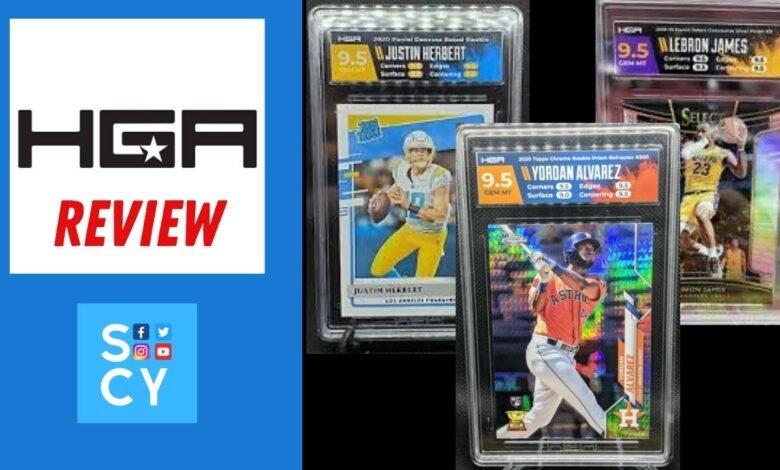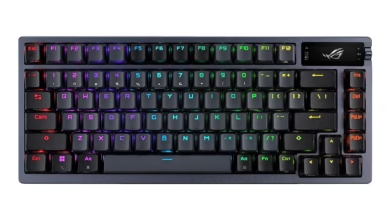HGA Grading: A Fresh Take on Card Collecting and Grading

HGA Grading Grading sports and trading cards has been around for decades, but in recent years, a new player entered the scene and immediately began turning heads—Hybrid Grading Approach, better known as HGA Grading. For collectors tired of traditional grading companies and looking for something more modern, consistent, and aesthetically pleasing, HGA has brought a much-needed twist to the world of card grading. But what exactly makes HGA different, and is it worth the hype?
Let’s dive into what HGA Grading is, how it works, and why collectors are giving it a closer look.
What Is HGA Grading?
At its core, HGA (Hybrid Grading Approach) is a card grading company that aims to combine the best of both human and AI grading technologies HGA Grading. Unlike some of the older grading companies that rely almost entirely on manual assessment, HGA prides itself on using a hybrid model—hence the name—to create more consistent and unbiased grades.
Combining Technology with Human Insight
HGA uses software algorithms to analyze centering, edges, corners, and surface wear HGA Grading. This AI technology removes a large chunk of subjectivity from the grading process. But HGA doesn’t stop there; they also have human graders review the AI results to ensure that the grades make sense and account for things machines might miss—like surface print lines or factory defects that AI could misinterpret.
This two-tier process is designed to eliminate inconsistencies and deliver more precise, repeatable grades. That’s a big deal in a market where slight differences in grading can drastically impact the value of a card.
A Modern, Collector-Focused Philosophy
HGA wasn’t founded by corporate giants—it was created by collectors, for collectors. Their mission was clear from the beginning: create a better grading system that reflects the needs of modern-day hobbyists. From sleek labels to a user-friendly submission process, HGA is very much geared toward a newer generation of collectors who appreciate both tech and aesthetics HGA Grading.
Standing Out in a Competitive Market
In a space dominated by giants like PSA, BGS, and SGC, you might wonder how a newer company like HGA could compete. The answer? Innovation. From their color-matching labels to their consistent turnaround times, HGA came out of the gate with a desire to do things differently—and in many ways, they’ve succeeded.
How the HGA Grading Process Works
Understanding how HGA grades cards gives insight into why so many people are interested in trying them out. The process is straightforward but filled with thoughtful touches that collectors appreciate.
Step 1: Submitting Your Cards
Submitting cards to HGA is relatively easy. You create an account, choose a service level (based on turnaround time), and fill out your submission form HGA Grading. One thing collectors love is the cap on weekly submissions, which helps prevent backlog and ensures timely returns—a problem that has plagued other grading companies in the past.
Step 2: AI-Powered Pre-Assessment
Once the cards are received, they go through an AI analysis. This includes digital scans to measure centering with microscopic precision. The system checks every detail, including edge wear, corner sharpness, and surface flaws HGA Grading. By using AI, HGA aims to minimize bias and inconsistencies that are common in manual-only grading.
Step 3: Human Grader Verification
After the AI does its thing, a human grader steps in to review the assessment. This hybrid approach ensures that nothing is missed, and any unusual anomalies can be caught and considered. It’s a checks-and-balances system that increases overall grading reliability.
Step 4: Final Grade & Label Customization
Once the grade is finalized, HGA prints a label that matches the theme or color scheme of the card. This is one of HGA’s standout features—it’s not just about the grade; it’s about how the slab looks as a display piece. These custom labels add a layer of visual appeal that other grading companies often ignore HGA Grading.
What Makes HGA Grading Unique?
So, what really sets HGA apart from other card grading companies? While they offer a solid grading system, there are a few features that make them stand out in a crowded market HGA Grading.
Color-Matching Labels
This is probably HGA’s most talked-about feature. Instead of boring, generic labels, HGA customizes its label design to match the card HGA Grading. That means if you have a fiery red Luka Doncic card, the label will likely incorporate red elements that match the design. The result? A slab that looks more like a collector’s item and less like an old filing cabinet tag.
You can also choose between:
- Team match
- Card match
- Neutral label
- Custom label
This kind of personalization has turned HGA slabs into display-worthy pieces, not just storage units.
Consistency in Grading
Because of their reliance on AI, HGA is often praised for consistent grading results HGA Grading. That’s a huge win for collectors who have been frustrated by other companies where one grader might give a card a 9 and another might give it a 10 based on mood or lighting.
With HGA, the consistency is algorithmically driven, with human oversight ensuring fairness. That means you’re far less likely to feel like the outcome is based on chance.
Turnaround Time Integrity
One of the biggest complaints in the hobby in recent years has been delays in getting cards graded. HGA made a promise early on to limit submissions to ensure they can stick to their promised turnaround times—and they’ve largely kept that promise. If you choose a 10-day turnaround, they usually hit that mark or come very close.
Pros and Cons of HGA Grading
No grading service is perfect, and HGA is no exception. Let’s weigh the upsides and downsides so you can decide whether it’s the right fit for your cards.
Pros:
- Aesthetically pleasing slabs that look amazing in collections or displays
- AI + human grading increases consistency and transparency
- Custom label options make your cards stand out
- Transparent and honest about turnaround times
- Easy-to-use website and submission process
Cons:
- Resale value isn’t yet on par with PSA or BGS
- Still a relatively new player, so market confidence is growing but not yet at peak
- Cross-grading to other companies can be hit or miss
- Limited international availability
For collectors who care more about keeping or displaying cards than flipping them for top dollar, HGA is an excellent choice. For flippers and investors, PSA may still be the king in terms of resale value—for now.
Is HGA Grading Worth It?
The short answer: Yes, for the right collector.
If you’re someone who wants your cards to be graded fairly, consistently, and returned quickly—and you care about how your slabs look—HGA is absolutely worth checking out. It’s especially ideal for personal collections, players who aren’t mainstream, or modern cards where aesthetics matter.
However, if you’re looking to flip cards or grade solely for market value, PSA or BGS might still be better choices due to wider name recognition and stronger resale pricing.
That said, HGA is growing, and as more collectors appreciate what they’re doing, the brand recognition and resale potential may grow right along with it.
Final Thoughts on HGA Grading
The card grading world needed a shakeup, and HGA has delivered just that. With its unique blend of tech and tradition, emphasis on visual appeal, and commitment to timely service, HGA has carved out a niche that’s gaining more traction every day.
It may not yet have the history or resale clout of PSA, but for modern collectors, investors who want something different, or those just looking to show off their favorite cards in style, HGA brings a lot to the table. Whether you’re grading a Zion Williamson rookie or a classic Charizard, HGA offers a refreshing alternative that could be just what your collection needs.



